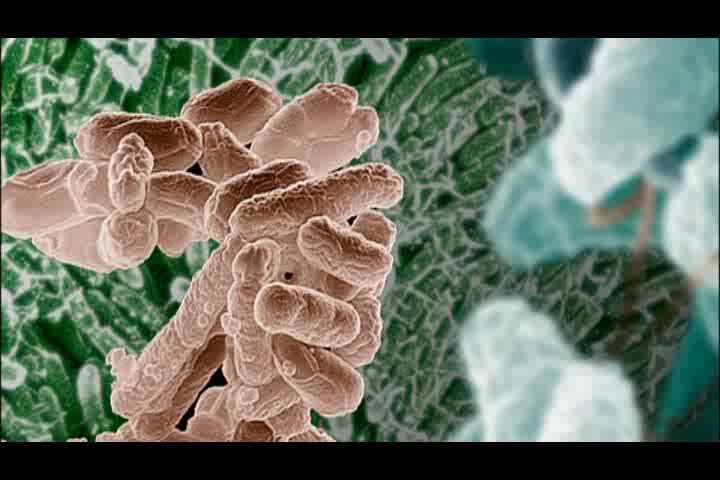![]()
Suelos y Bacterias Resistentes a los Antibióticos
He insistido a diversos expertos en medicina, sobre el posible potencial del suelo para generar bacterias multiresistentes a los antibióticos durante años. ¡Ni caso!. Intenté también que los colegas edafólogos que pertenecen a facultades de farmacia, investigaran este tema, dando una nueva salida a sus intereses profesionales. ¡Ni modo!, como se diría en México. El 24 de diciembre de 2009, Science Daily, publicó una nota de prensa en la que nos alerta del incesante incremento de este preocupante tipo de microorganismos en el suelo. Si el medio edáfico recibe incesantemente el insumo de tales fármacos, y genes resistentes a los mismos, se convierte en una fábrica o reactor de patógenos que atentan contra la salud de la naturaleza y del propio hombre. El problema de sanitario inducido es gravísimo. Los datos dan cuenta del mismo. Regar con aguas residuales (no depuradas), el sistemático uso de antibióticos en la alimentación del ganado, así como el cultivo de ciertas variedades transgénicas comienza a causar estragos en el suelo y de ahí a envenenar toda la cadena trófica.

Microorganismos del suelo. Fuente: SCivee
Cuando analizamos el DNA extraído de muestras de suelos y lo comparamos con los de décadas procedentes, se constata un alarmante incremento de genes con resistencia a los antibióticos. Es bien conocido el flujo horizontal de genes en el mundo microbiano. Si bacterias que poseen material genético resistente se reproducen en el suelo, a menudo, intercambien este con otras, generando que la resistencia y multiresistencia se expanda entre las comunidades microbianas edáficas. Debe tenerse en cuenta que la concentración de microorganismos por gramo de suelo excede con creces a los de las aguas (se encuentran mucho más “apretaditos” en el espacio). El suelo, por su composición salina, clima temperado y abundancia en microorganismos, puede llegar a ser un caldo de cultivo formidable para la producción de gérmenes. Al suelo van a parar los excrementos del ganado alimentado por antibióticos, así como el material transgénico que atesoran algunos plantas generadas por las factorías biotecnológicas. Más aun, el riego con aguas residuales urbanas también puede aportar antibióticos y bacterias resistentes a los mismos. Y al cocinar este potaje el resultado era más que previsible. Los recursos edáficos no son un vertedero, pero en ello estamos bajo sistemas de gestión insustentables.
Lo dicho, la agricultura industrial, insustentable desde cualquier punto de vista, está convirtiendo el suelo en una factoría mortal que envenena y contamina toda la cadena trófica (química y biológicamente). No podíamos estar construyendo una bomba biológica con mayor eficiencia si nos lo propusiéramos (intencionadamente). O cambiamos radicalmente nuestra agricultura y usos del suelo o el problema para la humanidad será mayúsculo. De nuevo, la farmaindustria y la agroindustria emergen como líderes indiscutibles de la insustentabilidad.
Juan José Ibáñez
Soil Studies Reveal Rise in Antibiotic Resistance
ScienceDaily (Dec. 24, 2009) — Antibiotic resistance in the natural environment is rising despite tighter controls over our use of antibiotics in medicine and agriculture, Newcastle University scientists have found.
Bacterial DNA extracted from soil samples collected between 1940 and 2008 has revealed a rise in background levels of antibiotic resistant genes.
Newcastle University‘s Professor David Graham, who led the research, said the findings suggest an emerging threat to public and environmental health in the future. «Over the last few decades there has been growing concern about increasing antibiotic resistance and the threat it poses to our health, which is best evidenced by MRSA,» explained Professor Graham, who is based in the School of Civil Engineering and Geosciences at Newcastle University.
«Despite increasingly stringent controls on our use of antibiotics, the background level of antibiotic resistant genes, which are markers for potential resistance, continues to rise in soils.» «This increases the chances of a resistant gene in a harmless bacteria being passed onto a disease-causing pathogen, such as a MRSA, with obvious consequences.»
Published online this week in the academic journal Environmental Science and Technology, the report uses data taken from five sites in the Netherlands. The team found that 78 per cent of genes from four classes of antibiotics showed increasing levels since 1940 — despite continued efforts to reduce environmental levels. Professor Graham said the next step would be to analyse soil samples from other parts of the world, although he expects to see similar results.
He adds: «The big question is that with more stringent European regulations and greater emphasis on conservative antibiotic use in agriculture and medicine, why are antibiotic resistant gene levels still rising?» «Whatever the cause, this rise suggests an ever increasing risk of resistant genes being passed from environmental organisms to organisms of greater health concern.» Professor Graham contends that more complementary studies are desperately needed between environmental and public health researchers to determine whether this increasing ‘pool’ of resistance is actually contributing to harmful bacteria, such as MRSA.
Story Source: Adapted from materials provided by Newcastle University. Journal Reference: Knapp et al. Evidence of Increasing Antibiotic Resistance Gene Abundances in Archived Soils since 1940. Environmental Science & Technology, 2009; 091221172123091 DOI: 10.1021/es901221x

AGRADESCO POR BRINDAR INFORMACIONES QUE VALEN LA PENA LEERLAS Y ANALIZARLAS, SACAR NUESTRAS PROPIAS CONCLUCIONES PARA APORTAR ALOS DEMAS EN FORMA EDUCATIVA MUY AGRADECIDO CON USTEDES………………….
Les agradezco una información tan precisa e interesante. Da que pensar.
[…] Suelos y Bacterias Resistentes a los Antibióticos […]
[…] Suelos y Bacterias Resistentes a los Antibióticos […]
[…] Suelos y Bacterias Resistentes a los Antibióticos […]